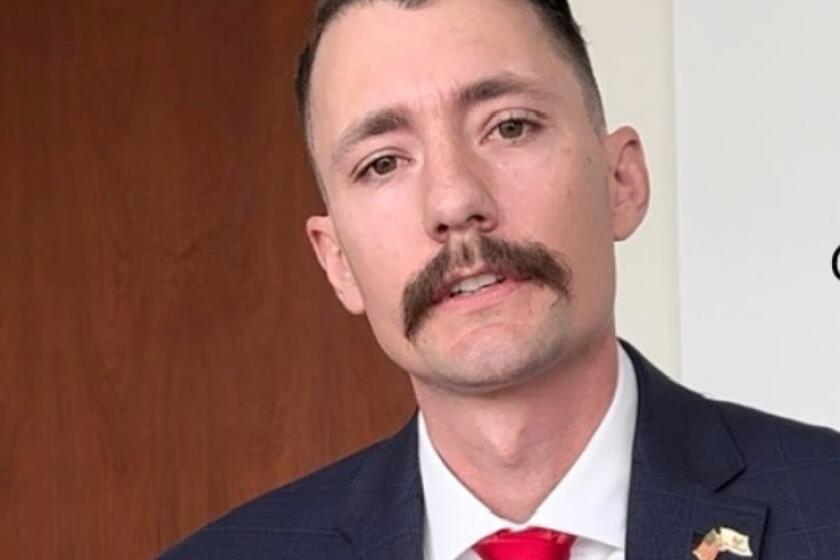Contaminated Soil at El Toro Is Cited in Anti-Park Report
- Share via
Developing a park at the El Toro Marine base is too risky because it would expose people to cancer-causing chemicals in the soil, the chairman of an environmental review board told supervisors Wednesday.
Environmental attorney Greg Hurley repeated controversial warnings he issued last month that contamination from 56 years of military use hasn’t yet and may never be cleaned at El Toro. It would be too great a safety risk to build a park with a large lake and gardens at the former base, he said.
Voters on March 5 will be asked to replace the county’s plan for an airport with plans for a park, nature preserve and other development on the 4,700-acre site.
Supervisors, who have promoted the airport for seven years by a one-vote margin, split 2-2 over whether to accept Hurley’s report. Chairwoman Cynthia P. Coad, who backs an airport at the base, left before his presentation.
Supervisors Todd Spitzer and Tom Wilson, who oppose the airport plan, said they couldn’t endorse Hurley’s conclusions because they focused solely on the park. Any report acknowledged by the county should come from its own consultants and should evaluate both El Toro plans, they said.
Spitzer sparred the most with Hurley, asking him to justify his conclusions. At one point, Spitzer apologized for heavy criticism aimed at Hurley, who has headed the El Toro environmental review board for five years.
The problem, Spitzer said, is that Hurley’s analysis of El Toro was presented at a luncheon sponsored by two pro-airport groups. Hurley was paid by the groups to analyze the environmental issues surrounding the park plan.
Hurley said concerns about excavating base soil would exist with the airport as well as the park. The difference, he said, is that airport runways would cover contaminated soil and the airport’s limited access would discourage human contact, while a park would do the opposite.
Given the level of possible contamination, “Do we know enough to make a decision on whether or not to accept the base” from the Navy? Spitzer asked.
“I don’t think we know enough to start development of the base,” said Hurley, a partner at Kutak Rock, one of the country’s leading environmental law firms.
Hurley has argued that the Navy’s cleanup plan for El Toro focused on written records of contamination at the base, listed as one of the most polluted sites in the country. Much of the contamination wasn’t documented, he said. And without knowing for sure whether the soil was clean, the county likely will encounter problems after the base is handed over, he said.
Navy officials have said they based their review on decades of records and were not required to test the soil. If the county wants to do soil testing, that could be arranged, they said, as long as the county has a safety plan and accepts the liability.
Federal law requires the Navy to clean up contamination at the base. But there is no deadline for cleanup, which could take decades. The Navy also could decide that some areas cannot be fully cleaned and place them off-limits for redevelopment.
The Navy is expected to approve its final cleanup plan in April, as a prelude to conveying the property to the county’s control.
An independent study of El Toro released by Irvine in January 2000 came to a similar conclusion as Hurley: that exposure to soil excavated during construction at the base presented a higher than acceptable cancer risk. People could be exposed to harmful levels of hazardous materials without even knowing it, the report said.
Michael Brown, an environmental consultant for Irvine, told supervisors that Hurley was overstating the Irvine report. Irvine officials also have criticized Hurley’s conclusions.
Hurley said his reputation has been maligned by such attacks.
More to Read
Sign up for Essential California
The most important California stories and recommendations in your inbox every morning.
You may occasionally receive promotional content from the Los Angeles Times.













